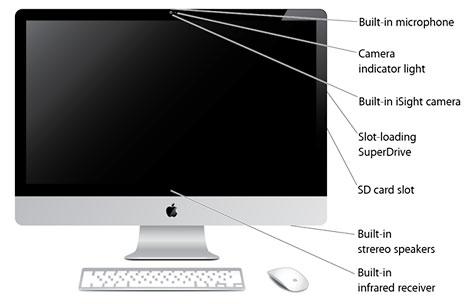Secure Digital Slot
In later years, the mini’s Secure Digital slot was upgraded to support extended capacity SDXC cards up to 1 Terabyte of storage. Mac Mini SD Slot Location Apple is still including an SDXC (and SDHC - SD backward compatible) flash memory card slot on the slimmer aluminum Mac mini systems. But Secure Digital, a tiny postage stamp-sized media that supports Input/Output, is the first internal expansion Palm will support in its own devices. With SD's I/O capabilities, Palms can add both content storage and wireless connectivity, including Bluetooth and 802.11. With Secure Exchanges digital signature, getting PDF documents signed is child's play. You're done with missing signatures on contract pages or incomplete information on documents. No more looking for the perfect time slot to have everyone around the table at the same time to complete a signing session. An “SDXC card slot” is a slot in a computer that can read from and write to Secure Digital eXtended Capacity (SDXC) 1 memory cards. It will also be backwards-compatible with cards following the older standards SDHC (Secure Digital High Capacity).
There are three main types in the SD memory card family. SD, SD High Capacity (SDHC™), and SD Extended Capacity (SDXC™). This article details the different specifications of all three types of SD memory cards and the speed class ratings and compatibilities that are different with each type.
Additional Reference: SD Assocation Consumer Information

SD capacities range from 128MB to 2GB
Default Format: FAT16
SD cards will work in all host devices that support SD, SDHC, or SDXC
SD High Capacity (SDHC™) card is an SD™ memory card based on the SDA 2.0 specification.
SDHC capacities range from 4GB to 32GB
Default Format: FAT32
Because SDHC works differently than standard SD cards, this format is NOT backwards compatible with host devices that only take SD (128MB - 2GB) cards. Most readers and host devices built after 2008 should be SDHC compatible.
To ensure compatibility, look for the SDHC logo on cards and host devices (cameras, camcorders, etc.)
SD Extended Capacity (SDXC™) card is an SD™ memory card based on the SDA 3.0 specification.
SDXC capacities range from 64GB to 2TB
Default Format: exFAT
Because SDXC uses a different file system called exFAT and it works differently than standard SD cards, this format is NOT backwards compatible with host devices that only take SD (128MB to 2GB) or host devices that only take SDHC (4GB to 32GB). Most host devices built after 2010 should be SDXC compatible.
To ensure compatibility, look for the SDXC logo on cards and host devices (cameras, camcorders, etc.).
NOTE: Internal card readers on laptops up to year 2008 may NOT support SDXC cards. SDXC cards will work in SDHC compatible readers (not SD readers) if the computer OS supports exFAT.
For more information on exFat see: Operating Systems that support the exFAT File System
Ultra High Speed, Phase I (UHS-I) bus design for SDHC and SDXC cards was added in SD spec 3.0. This is a design enhancement to increase the performance of SDHC/SDXC cards.
UHS-I specification defines two bus architecture options for up to 50MB/s (UHS-50) and 104MB/s (UHS-104) data transfer rates. These are theoretical maximum limits and actual maximum performance for a specific card is defined on it label or in advertising.
UHS is an enhancement to the original SD interface specifications. Host devices will obtain the UHS maximum speed when both the card and host device support UHS. Otherwise, the host device and card will use the slower SD maximum speed obtainable.
There is no compatibility problem using a UHS card with a non-UHS device.
Ultra High Speed Phase II (UHS-II) bus design for SDHC and SDXC was added in SD spec 4.0. This is an additional design enhacement with connector interface modifications to increase performance.
UHS-II specification defines bus architecture for options of 156MB/s and 312MB/s. Manufacturers implemented the 312MB/s option in memory cards. These are theoretical maximum limits and actual maximum performance for a specific card is defined on the label or in advertising.
Host devices will obtain the maximum UHS-II speed when both the card and the host device support UHS-II. Otherwise, the host device and card will use the highest compatible UHS-I or SD bus speed.
Secure Digital I/o Slot
There is no compatibility problem using a USH-II card in a UHS-I or non-UHS device.
Speed Class & UHS Speed Class Rating
Speed class ratings define a minimum guaranteed speed of SDHC/SDXC cards. Speed class rating is important for HD video mode or camcorders, where the device is actually saving a steady stream of data. The resolution and format of the video determines the amount of steady stream data. You should consult your camera user manual for minimum speed class requirements for HD video modes.
Speed Class (SD Bus)
Secure Digital Slot
Class | Minimum Speed |
2 | 2MB/s |
4 | 4MB/s |
6 | 6MB/s |
8 | 8MB/s |
10 | 10MB/s |
UHS Speed Class (UHS Bus)
UHS Class | Minimum Speed |
1 | 10MB/s |
3 | 30MB/s |
For a more detailed explanation of speed class see: Difference between Speed Class, UHS Speed Class, and Speed Ratings...
SD Association: Speed Choices
Compatibility Summary
The chart below shows the host device and the memory cards supported.
| Host device (ex. cameras, video recorders, phones, readers, etc.) | Memory cards supported |

Secure Digital (sdxc) Slot
- SDXC memory cards can ONLY be used with SDXC host devices.
- SDXC memory cards will NOT work with SD / SDHC host devices.
Additional info on SDXC cards and host devices
- SDXC host devices can use and support SD, SDHC and SDXC memory cards.
- SDHC host devices can use and support both SD and SDHC memory cards.
- SDHC memory cards can be used with SDHC and SDXC host devices.